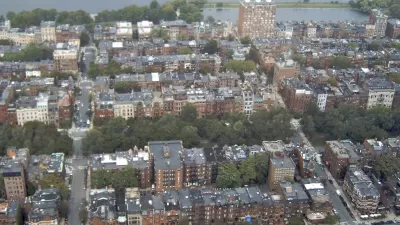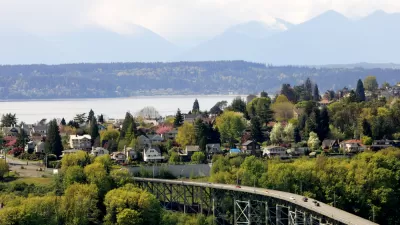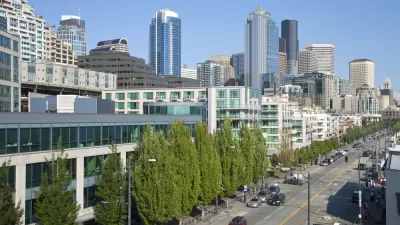The push for historic preservation districts often amounts to exclusionary zoning that exacerbates the housing affordability crisis.

Seattle's Mandatory Housing Affordability Program includes a provision that protects federally designated historic districts from zoning changes. Writing in The Urbanist, Mike Eliason argues that this protection amounts to a new form of restrictive covenant that will prevent denser development in many parts of the city and lead to an even bigger affordability crisis.
One such zone, Wallingford, is proposing a historic preservation district that would effectively freeze development in almost half of the Wallingford Urban Village Planning Area. The zone's proponents have also opposed more permissive accessory dwelling unit (ADU) regulations, reduced parking requirements, and affordable housing requirements.
Eliason contends that opposition to zoning changes that would increase density in a neighborhood central to transit and urban amenities hinders the city's efforts to make housing more affordable and meet climate goals. "From a historic standpoint, this is just another attempt by wealthy homeowners —who ironically are a minority of the Wallingford Urban Village—to keep those less well off out of their neighborhood." In the 1980s, local homeowners fought to have parts of the area downzoned to even further reduce opportunities for multi-family and student housing, despite the neighborhood's proximity to a university. Eliason admonishes readers to oppose the Wallington project and prevent historic preservation from becoming "yet another tool wielded by those living in exclusive enclaves to prevent rezoning for a more equitable, inclusive, and sustainable city."
FULL STORY: Are Historic Districts a New Variation to Restrictive Covenants?

Study: Maui’s Plan to Convert Vacation Rentals to Long-Term Housing Could Cause Nearly $1 Billion Economic Loss
The plan would reduce visitor accommodation by 25,% resulting in 1,900 jobs lost.

North Texas Transit Leaders Tout Benefits of TOD for Growing Region
At a summit focused on transit-oriented development, policymakers discussed how North Texas’ expanded light rail system can serve as a tool for economic growth.

Using Old Oil and Gas Wells for Green Energy Storage
Penn State researchers have found that repurposing abandoned oil and gas wells for geothermal-assisted compressed-air energy storage can boost efficiency, reduce environmental risks, and support clean energy and job transitions.

Private Donations Propel Early Restoration of Palisades Playground
Los Angeles has secured over $1.3 million in private funding to restore the Pacific Palisades playground months ahead of schedule, creating a modern, accessible space that supports community healing after recent wildfires.

From Blight to Benefit: Early Results From California’s Equitable Cleanup Program
The Equitable Community Revitalization Grant (ECRG) program is reshaping brownfield redevelopment by prioritizing projects in low-income and environmental justice communities, emphasizing equity, transparency, and community benefits.

Planting Relief: Tackling Las Vegas Heat One Tree at a Time
Nevada Plants, a Las Vegas-based nonprofit, is combating the city’s extreme urban heat by giving away trees to residents in underserved neighborhoods, promoting shade, sustainability, and community health.
Urban Design for Planners 1: Software Tools
This six-course series explores essential urban design concepts using open source software and equips planners with the tools they need to participate fully in the urban design process.
Planning for Universal Design
Learn the tools for implementing Universal Design in planning regulations.
Ascent Environmental
Borough of Carlisle
Institute for Housing and Urban Development Studies (IHS)
City of Grandview
Harvard GSD Executive Education
Toledo-Lucas County Plan Commissions
Salt Lake City
NYU Wagner Graduate School of Public Service





























